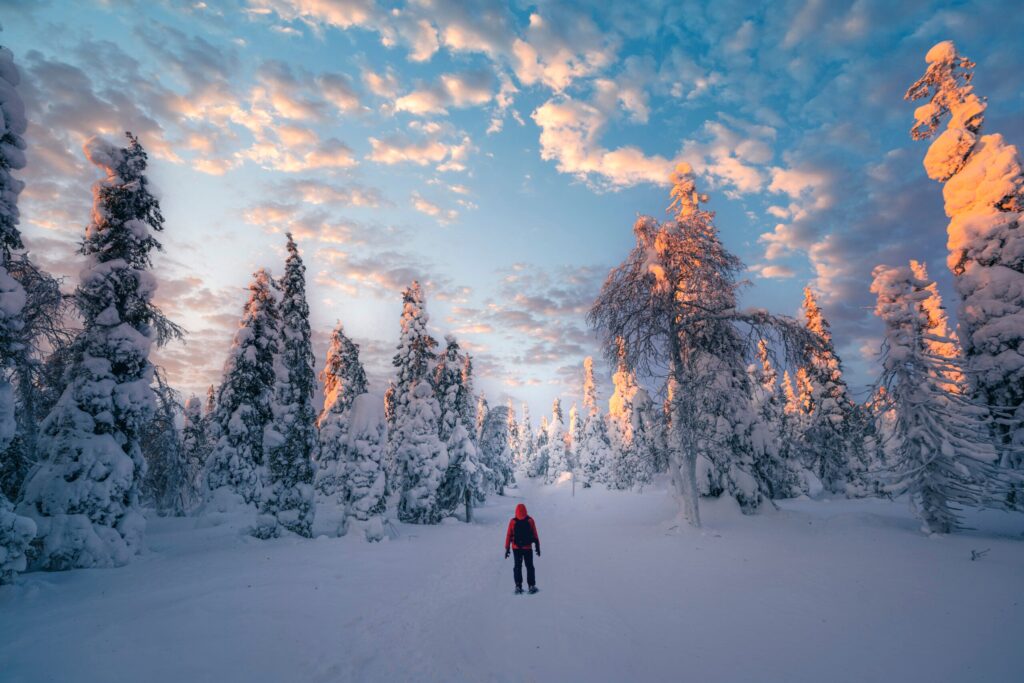These will be the coldest places in America this winter, according to the 2026 Old Farmer’s Almanac and AccuWeather’s winter report
(Photo: Getty)
Published October 2, 2025 07:38AM
Winter might still feel far off, but the season is already brewing in the minds of forecasters—and in the plans of skiers, runners, and anyone who loves crisp, cold days outside. The early word? Don’t count on a single storyline. This winter is shaping up to deliver the usual mix of curveballs: warm spells that trick you into shelving the puffy, cold snaps that send you scrambling for the layers, and storms that show up right when you least expect them. Here’s what meteorologists are watching.
The Big Picture
The Southeast and western U.S. are predicted to have a calmer December through February in part because of the drought we saw this summer throughout western states, and the way the weather pattern and storm track seem to be going, lead long-range expert Paul Pastelokknow of AccuWeather, shared with Outside. “This storm track is going to set up farther north and the west, so things could end up being milder,” said Pastelokknow.
But the jury’s still out when it comes to the middle and eastern parts of the nation. “There may be an amplified pattern at times during the course of the winter season that would bring down some cold air and what it will side with, as far as departures from normal for the 90 day period, December through February, it is tough to call,” Pastelokknow said.
The 2025/2026 winter season could look very similar to last year. “There were mild periods, but then we had a couple of really cold periods that took place, especially mid-January,” and that’s what you will see in the breakdown below.
The Coldest Cities This Winter
Midwestern states will get the coldest, according to Pastelokknow, including states like: Minnesota, Iowa, Wisconsin, and maybe parts of the Dakotas. This is where we see the coldest air when we compare historical averages and actual air masses, he said.
AccuWeather just released its Wintercast, which you can track in realtime in their app. The app has a “real feel” feature that compares the actual temp to how you may be feeling outside.
The Warmest Cities This Winter
On the flip side, the Southwest will see the warmest weather, Pastelokknow shared. Overall, weather predictions are slightly above average, but not by much, he said.
“There’s too much back and forth in the East to get a good grip,” said Pastelokknow. “We’re still looking at some stuff the southwest and the western U.S., because the waters are so warm over the Pacific, if they stay that way, that area of the country could be warm all the way to the coast.”
All-in-all the best grip will come late fall when experts know which way the sea surface temperature will actually go.
Farmer’s Almanac Winter Weather Predictions Broken Down by Region
Meanwhile, the Old Farmer’s Almanac released its 2025/2026 winter predictions by region. Since 1792, the publication has predicted weather forecasts, calculated tides, and compiled sunrise and sunset times. These temperature and precipitation deviations are based on averages (or normals) derived from data provided by government meteorological agencies, data that is updated every ten years, still the Old Farmer’s Almanac claims only 80 percent accuracy.
Here’s how things are shaking out, big picture, according to the report.
In the Northeast
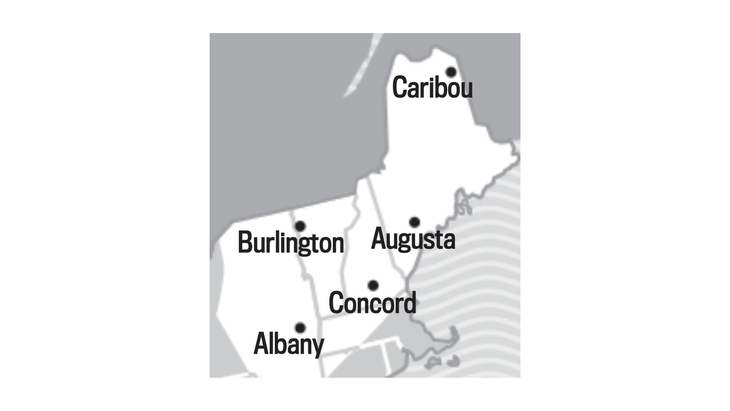
The coldest average temperature in the Northwest this winter will be 24 degrees Fahrenheit in January.
Winter temperatures are expected to be above normal with the coldest drops coming through December and in early January. The most snow will likely fall between mid-November and mid-December and then again in early February, but should be less than what fell last year.
In the Atlantic Corridor
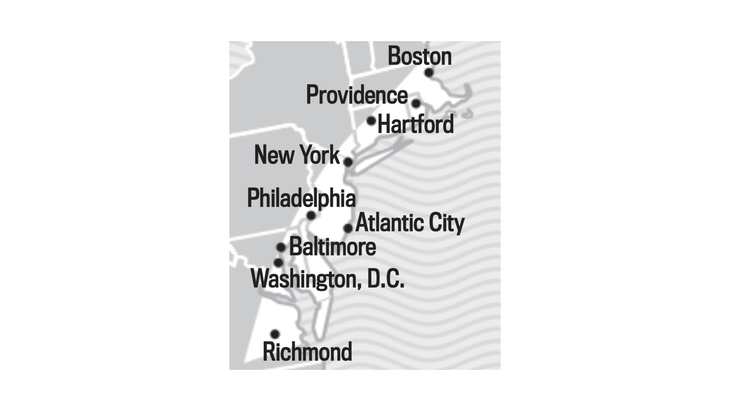
The coldest average temperature in the Atlantic Corridor this winter will be 35 degrees Fahrenheit in January.
Just like in the Northeast, winter temperatures are expected to be above normal with snowfall below normal. The coldest drops are predicted to come mid to late December through January. Snow is expected in late December, early January, and again in late February.
In the Appalachians
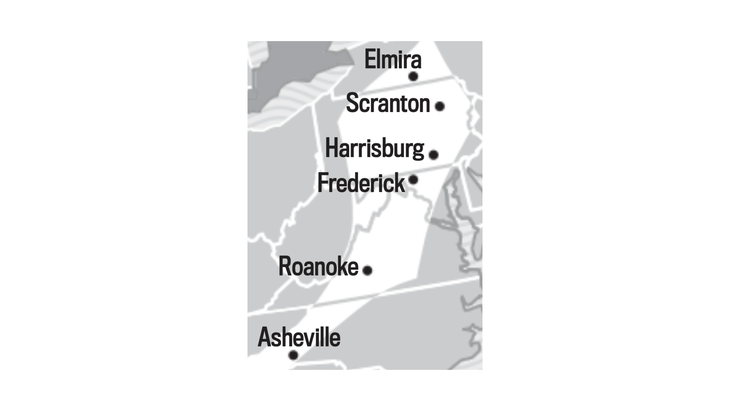
The coldest average temperature in the Appalachians this winter will be 29 degrees Fahrenheit in January.
Winter in the Appalachians is expected to be colder than normal, according to weather experts. Snowfall is expected to be below normal in the north and above in the south. Cold snaps could present in mid-to-late December through January, and again in early February.
In the Southeast
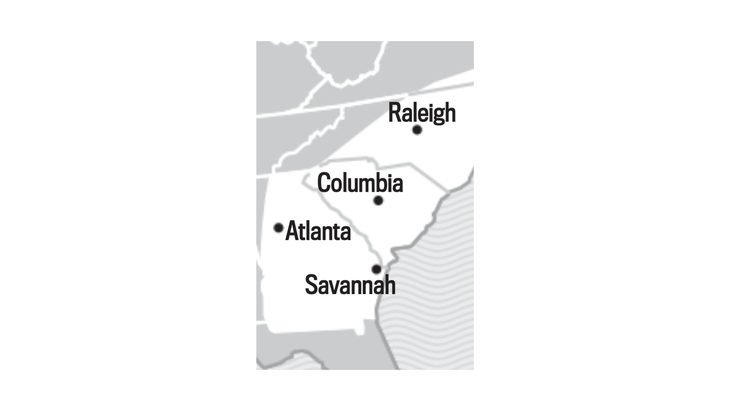
The coldest average temperature in the Southeast this winter will be 44 degrees Fahrenheit in January.
Winter temperatures are expected to be below normal in the Southeast, too, with the coldest periods mirroring the Appalachians: mid-to-late December through late January, and again in early February. Snowfall could be above normal in the east and lower west, with the most snow predicted to fall in mid-December. The north could see some serious snow in late January.
In Florida
The coldest average temperature in Florida this winter will be 58 degrees Fahrenheit in January.
Winter will be cooler than normal in Florida this season, with the coldest period predicted in come mid-to-late December, through most of January. Rainfall will be above normal.
In the Lower Lakes
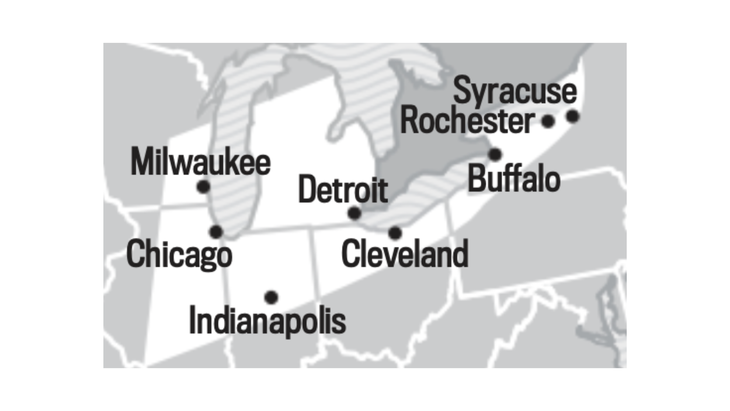
The coldest average temperature in the Lower Lakes this winter will be 26 degrees Fahrenheit in January.
Winter will be warmer through the Lower Lakes with cold pockets mid-to-late December through early February. Snowfall is expected to be about the same, possibly a bit below normal, with the first snowfall expected mid-to-late November and the last in early to mid-March.
In the Ohio Valley
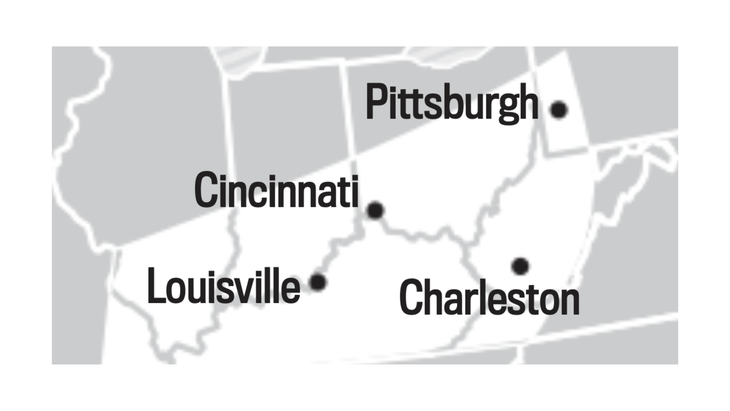
The coldest average temperature in the Ohio Valley this winter will be 32 degrees Fahrenheit in January.
It will be chiller in the Ohio Valley this season with the coldest flashes beginning in mid-to-late December and potentially lasting until mid-March. The snowfall will be similar or above normal in most of the area. Snow is expected in late December and will sprinkle throughout late February.
In the Deep South
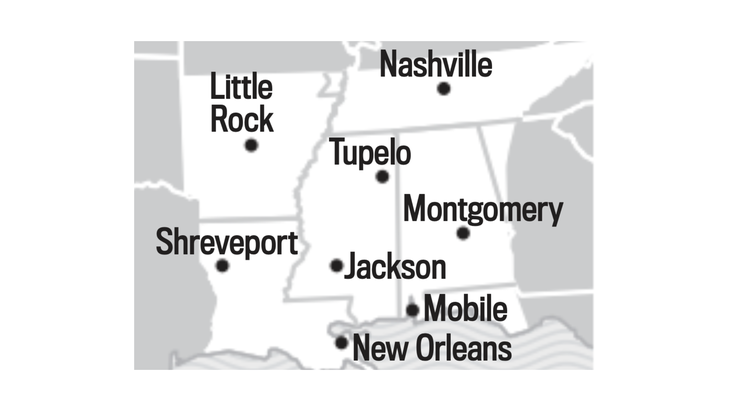
The coldest average temperature in the Deep South this winter will be 45 degrees Fahrenheit in January.
Winter will be warmer than normal through the Deep South with cold snaps emerging from mid-December to early February. Snowfall is expected to be below normal, falling in mid-November, late January and in early February.
In the Upper Midwest
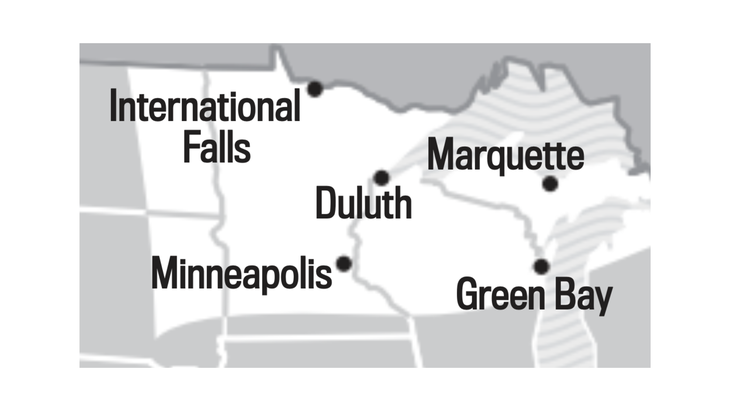
The coldest average temperature in the Upper Midwest this winter will be 15 degrees Fahrenheit in December.
Temperatures will be above normal in the Midwest. December is expected to be the coldest and some cold snaps are predicted for early and then late January, and early February. The most snowfall will occur in late November, late January, and early February.
In the Heartland
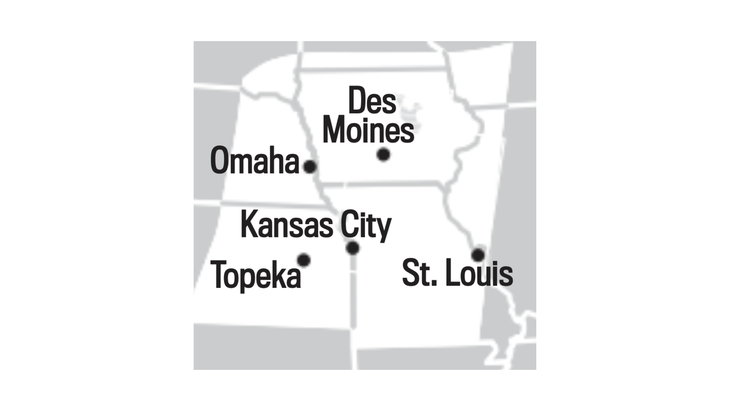
The coldest average temperature in the Heartland this winter will be 31 degrees Fahrenheit in January.
Winter will be warmer than normal through the Heartland with the coolest temps coming mid-December, and in early and late January. Snow is expected to fall below normal in the north, and about the same as last year in the south. Mid-November, late January, and early February will see the most snow.
In Texas-Oklahoma
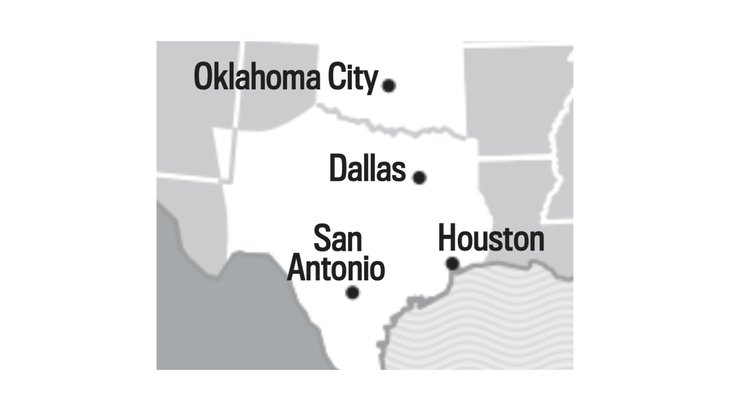
The coldest average temperature in Texas-Oklahoma this winter will be 31 degrees Fahrenheit in January.
Just like most of the nation, Texas-Oklahoma is expected to have a milder winter as well. Cold pockets will come in mid-Decemeber, early and late January, and early February. Snowfall will be well below normal with the only predicted snowfall coming in mid-November.
In the High Plains
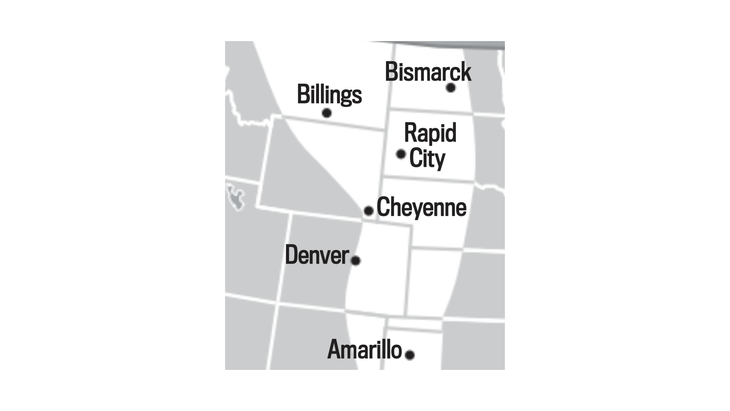
The coldest average temperature in the High Plains this winter will be 32 degrees Fahrenheit in January and February.
Winter temperatures are predicted to be above normal with cold snaps mirroring most other regions in mid-December, late January, and early February. Snowfall will be below to near normal across the High Plains with the snowiest season in late February and in mid-to-late March.
In the Intermountain Area
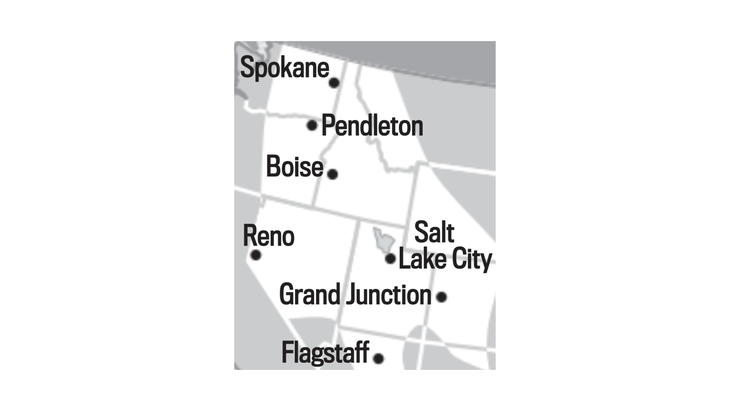
The coldest average temperature in the Intermountain area this winter will be 37 degrees Fahrenheit in January.
Winter in the Intermountain area will be warmer with cold snaps predicted to come in late November, early December, and in early February. Late January, early February, and late March will be the snowiest with below average snowfall in the north and above average snowfall in the south.
In the Desert Southwest
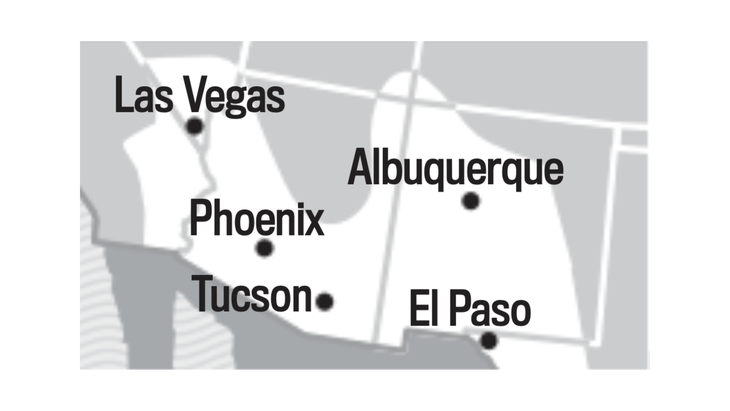
The coldest average temperature in the Desert Southwest this winter will be 49 degrees Fahrenheit in January.
Again, it’s predicted to be warmer than normal in the Desert Southwest. Mid-November, early December, and late January will see cooler weather. Snowfall will be above normal in the east, and normal in the West, with the most falling arriving early December to early-to-mid January.
Pacific Northwest
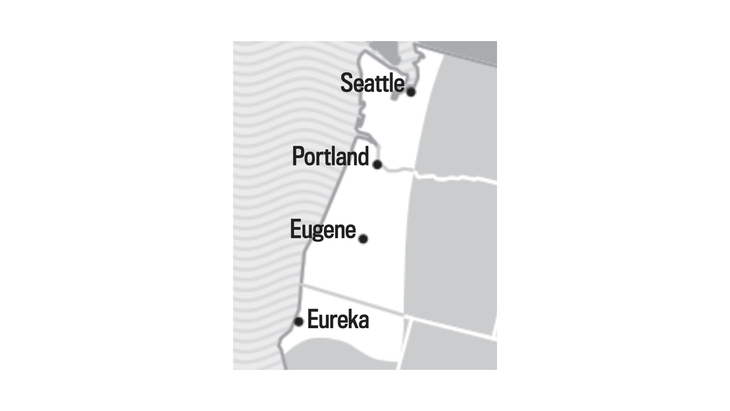
The coldest average temperature in the Pacific Northwest this winter will be 45 degrees Fahrenheit in January.
A warmer than normal winter is predicted for the Pacific Northwest with the coldest snaps coming in late November, early December, and in early February. Snow will be below the average, the most falling in early February.
Pacific Southwest
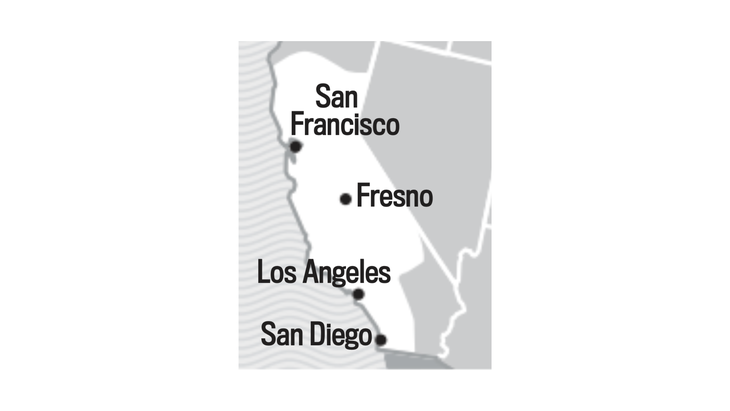
The coldest average temperature in the Pacific Southwest this winter will be 57 degrees Fahrenheit in December.
Winter is predicted to be warmer and drier through the Pacific Southwest this season, with below-normal mountain snows. The coldest temps will come in late January and late February, and the stormiest periods will arrive in late November, mid-January, and in late February.
Alaska
The coldest average temperature in Alaska this winter will be -8 degrees Fahrenheit in February.
Even Alaska is predicted to have a milder winter this season, with cold snaps coming mid-December and mid-February. Snowfall will be below normal as well with the most snowfall arriving in late November, mid-December, and in early February.
Hawaii
The coldest average temperature in Hawaii this winter will be 74 degrees Fahrenheit in January and February.
Hawaii will be warmer than normal, too. Late November, late January, early February, and mid-March will see the coolest temps. Rainfall in Hawaii will remain below normal though, with the stormiest stretches coming in early and late November, early December, mid-February, and mid-to-late March.


